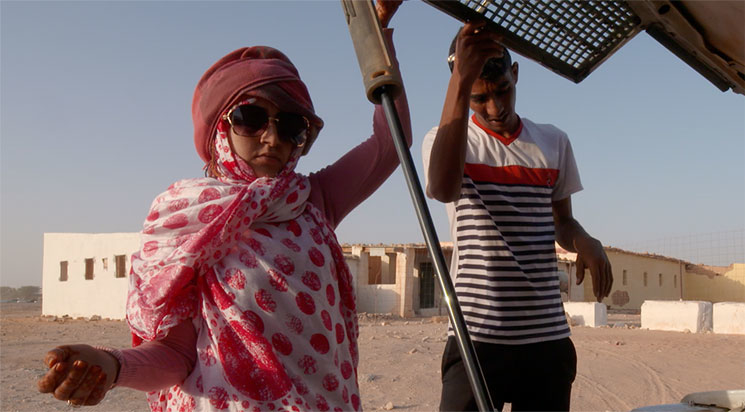Altiplano
16 min l 35mm optique
de Malena Szlam
L’Altiplano est un vaste plateau de la chaîne des Andes au centre de l’Amérique latine, dominée par des volcans en activité. Cette terre qui s’étend sur près de 1500 kilomètres entre la Bolivie, le Pérou, le Chili et l’Argentine, est soumise de longue date à une exploitation minière intensive pour ses réserves de nitrate, qui a déplacé de nombreuses populations. Employant donc la pellicule – 16mm gonflé en 35mm – Malena Szlam recourt à un certain nombre de procédés formels qui rejouent la manière dont la modernité perturbe un ordre ancien. Double exposition, flicker, saturation, inversions, craquements et drones produisent une richesse infinie de couleurs et de textures, suggérant une agitation tellurique de grande ampleur qui se manifestent en phénomènes de calcification, d’étuvage ou de liquéfaction. Décrivant un voyage horizontal du désert aux hautes terres, traversant au passage quelques oasis luxuriantes soufflées par les vents, Szlam rend sensible la multiplicité des strates qui composent ce paysage, des influences gravitationnelles de la Lune aux couches de magma qui mettent ses lacs en ébullition. Horizontal, vertical, linéaire, circulaire : attentive à toute la complexité morphologique, climatique et historique du lieu, Malena Szlam réinvente le film de paysage et fabrique un monde stupéfiant.
–Antoine Thirion
Altiplano is a vast plateau in the Andean Mountains in the centre of Latin America, dominated by active volcanos. This land spanning nearly 1,500 km between Bolivia, Peru, Chile and Argentina has been intensively mined over many years for its nitrate reserves, displacing many communities. Filming in 16mm, blown up to 35mm, Malena Szlam relies on a number of formal processes that reinvent the way in which modernity disturbs the old order. Double exposure, flickering, saturation, inversions, cracking and drones produce an infinite wealth of colours and textures, suggesting a major telluric turmoil that appears in the form of calcification, steaming or liquefaction. Depicting a horizontal journey from the desert to the highlands, crossing a few lush wind-blown oases on the way, Szlam gives a tangible dimension to the multiple strata that make up this landscape, from the Moon’s gravitational influences to the layers of magma that set its lakes boiling. Horizontal, vertical, linear, circular: mindful of all the morphological, climatic and historical complexity of the place, Malena Szlam reinvents the landscape film and creates an astonishing world.
–Antoine Thirion











